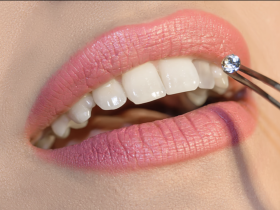Overview
Hyperneb Respules Uses and Side Effects
In this article, we will discuss Hyperneb Respules uses and side effects. The most common side effects of this product include coughing, sneezing, abnormal taste, and stinging sensation. It is important to know how to use this medication safely. Some people experience a stinging sensation in the nose. If you experience any of these side effects, discontinue use immediately.
Sodium chloride
It has a high molecular weight of 270 grams per mol and is soluble in both water and alcohol. Hyperneb Respules contain 4 mL of sodium chloride solution. The solution is clear, sterile, and is not toxic to humans. Hyperneb is safe for use during pregnancy and breastfeeding.
People taking sodium chloride may experience symptoms such as chest pain, increased or decreased urination, and increased or decreased thirst. Additionally, sodium chloride may cause muscle weakness, increased urination, leg pain, and decreased or increased thirst. Sodium chloride may also increase the risk of kidney stones. In addition, patients should tell their healthcare provider if they are pregnant or breastfeeding.
Its properties include regulating fluid balance, increasing the mobilization of secretions in the lower respiratory tract, and protecting the lungs from drying out. The sterile solution is available in different strengths and forms for treatment.
Sodium chloride in Hyperneb 3% Respules is an anti-inflammatory medication that relieves swelling and helps prevent infections.
It does not pass into breast milk and therefore is not harmful to nursing babies. It is important to follow all instructions on the nebulizer prescription label. Also, sodium chloride should be stored at room temperature away from heat and moisture. If you plan to use it on a regular basis, follow your doctor’s advice regarding dosage.
Sodium chloride is a source of electrolytes
Sodium chloride is a source of potassium and sodium. Hyperneb Respules contain 7% sodium chloride and 3% LDPE.. Hyperneb Respules are not for pregnant or breastfeeding women. Patients should consult a healthcare professional before using Hyperneb Respules.
Sodium is the most common cation in extracellular fluid and plays an important role in water distribution, fluid balance, and osmotic pressure. In the body, sodium and chloride work in conjunction to maintain normal osmolarity and pH. Sodium is important for the regulation of osmolarity, the acid-base balance, and the membrane potential of cells. Hypertonic sodium chloride can cause circulatory failure, pulmonary embolism, and augmented hypertension.
Sodium chloride is a source of sodium, potassium, and magnesium. It is a common ingredient in over-the-counter diuretics, but may cause unpleasant side effects. Inhalation of sodium chloride can lead to chest pain, increased or decreased thirst, or muscle weakness or limp feeling. In addition, sodium chloride interacts with various drugs and herbal products.
Sodium chloride is a source of salt and electrolytes in Hyperneb Resules. The drug is available in single-dose respules made of LDPE. The LDPE respules contain 4mL of sodium chloride solution. Sodium chloride is soluble in alcohol and water and has a molecular weight of 270g/mol.
Sodium chloride is a source of salt in Hyperneb Respules. Its osmolality is 308 mOsm/L. Therefore, it is considered to be isotonic. Hyperneb is not toxic to humans. But if you are prone to hyperneb toxicity, you should consult a doctor before taking any medication.
Sodium chloride inhaled through a nebulizer is nonpyrogenic. This medicine does not pass into breast milk, so it should not be used by nursing mothers. Always follow the manufacturer’s directions to ensure the safety of your medication. Also, do not use more than the recommended dosage or larger than recommended. It is best to consult your healthcare provider before using Hyperneb Respules for the first time.
Sodium chloride is a source of water
Its concentration varies with the needs of the patient. Sodium and chloride are the principal electrolytes of extracellular fluid. Both salts play an important role in fluid balance,
including regulation of osmolarity, acid-base balance, and cell membrane potential. Because of its osmotic effects, hypertonic sodium chloride is widely used for nebulisation. It can also cause stinging, sneezing, and increased nasal discharge.
Sodium chloride is a common source of water in Hyperneb 7% Respules. Hyperneb 7% Respules are available in pharmacies. The drug is used in the case of severe hyponatremia and is not a drug to be used for everyday use. Patients with a heart or lung condition should consult with their physician prior to using Hyperneb 7% Respules.
Sodium chloride can cause serious side effects, including chest pain and difficulty breathing, muscle weakness and increased or decreased urination. It can also cause increased or decreased urination and may interfere with other medications, including potassium supplements and vitamin and herbal products. As with any prescription medicine, a person should consult with their healthcare provider before using Hyperneb Sodium Chloride.
If you do not follow these instructions, consult a healthcare professional or pharmacist to determine the best dosage for you.













Leave a Reply